Sambal in Bali: A Fiery Delight in Paradise
Amidst the endless nasi goreng and succulent babi guling, there’s one element that has persistently tantalized my taste buds: sambal.
As an expat living here for the past few years, I’ve been fortunate enough to immerse myself in the Balinese way of life. And in it, sambal is ubiquitous in almost every meal and dish.
What is Sambal?
In its most basic form, sambal is a spicy chili paste or sauce made primarily from a mixture of variety of chili peppers with secondary ingredients such as shrimp paste, garlic, ginger, scallion, sugar, and lime juice. It is essentially the lifeblood of many Indonesian dishes and holds a special place in the heart of Balinese cuisine.
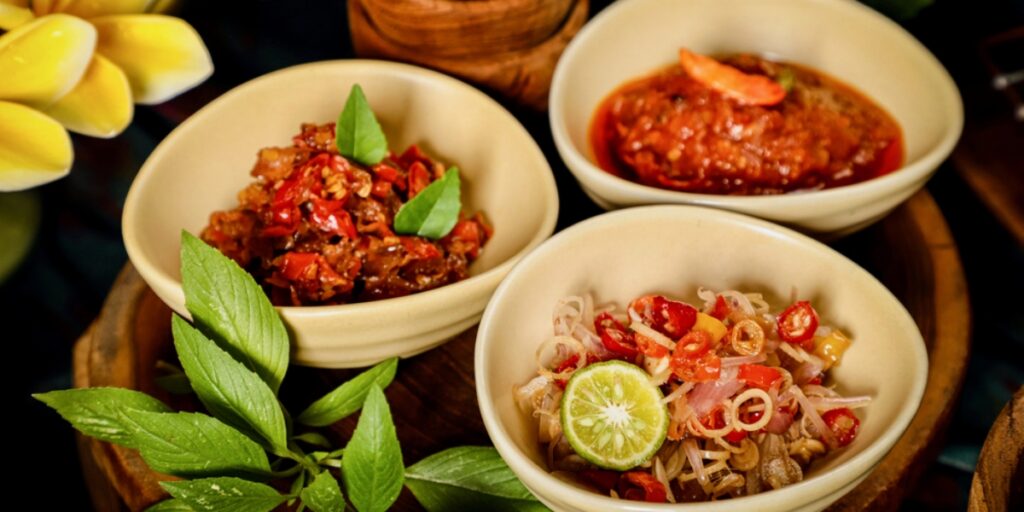
Origins of Sambal
Sambal’s origins are deeply rooted in the vast archipelago of Indonesia. The term “sambal” is of native origin, and while the exact etymology might be a matter of debate, its influence across the Southeast Asian region is undeniable.
The introduction of chili to Indonesia in the 16th century by Portuguese traders played a significant role in the evolution of sambal. Since then, its popularity and variations have grown immensely.
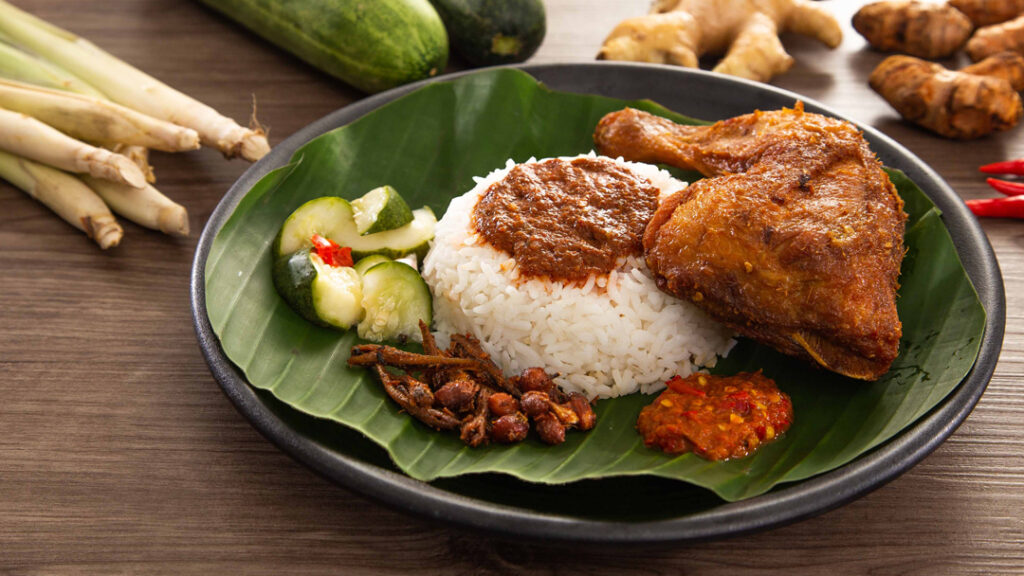
The Taste – A Dance of Flavors
To describe sambal as just “spicy” would be an oversimplification. It’s an orchestra of flavors – the heat of the chilies, the umami hint from the shrimp paste, the mild sweetness of palm sugar, and the zesty kick from lime. Each variant of sambal presents a unique blend, from the smoky taste of grilled sambal to the sweet and tangy hints in sambal matah.
As someone who’s traversed a fair share of spicy foods across the world, sambal stands out not just for its heat, but for the depth and richness of its flavors.
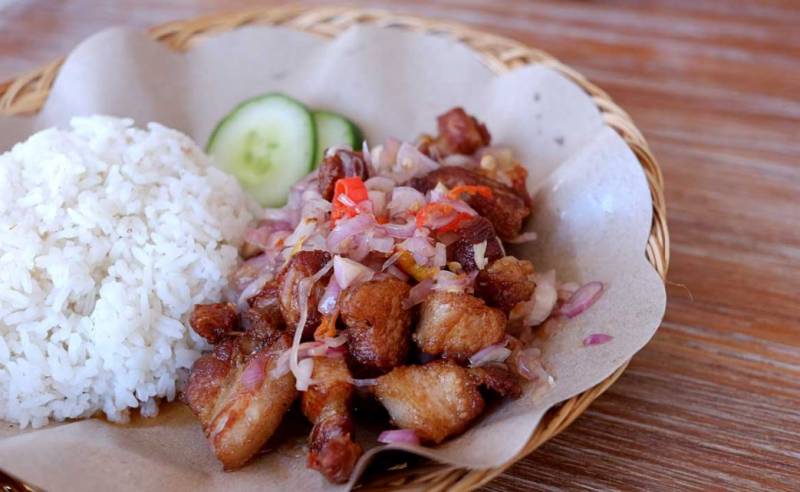
Ubiquity in Balinese Cuisine
In Bali, sambal isn’t just a side dish; it’s an essential component. Whether you’re enjoying a simple meal at a warung (local eatery) or dining at a posh restaurant in Seminyak, sambal is always within arm’s reach. The variety is astounding. There’s sambal tomat (tomato-based), sambal terasi (with shrimp paste), sambal matah (raw chili relish), and so many more. Each region, and sometimes even each household, has its unique take on this fiery condiment.
The Balinese often say, “A meal without sambal is like a ceremony without a prayer.” It’s interwoven in their daily lives, from temple feasts to beachside picnics. The love for sambal is so deeply ingrained that it’s common to see locals, including children, generously smearing sambal on their meals, accustomed to its fiery kick.
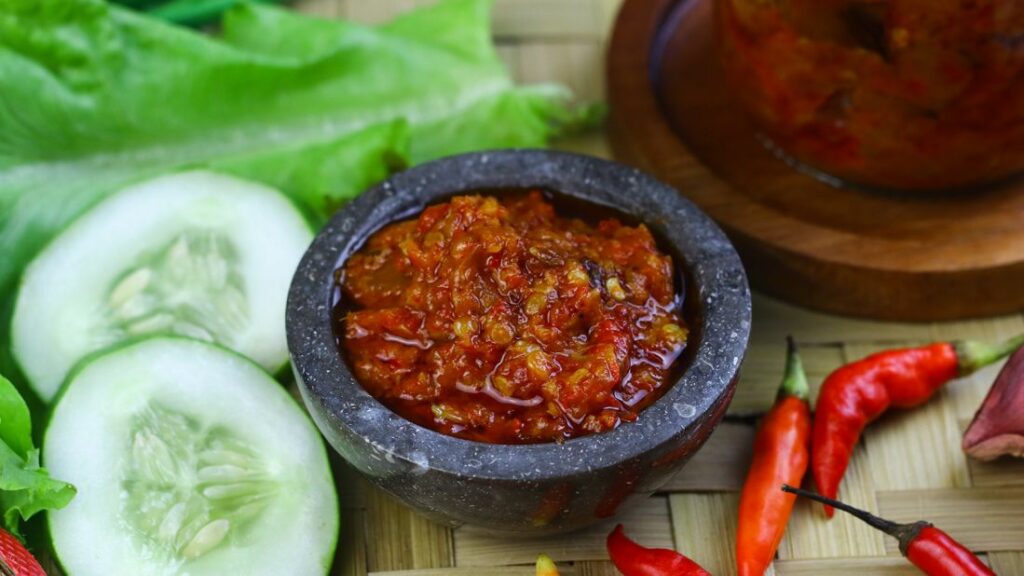
Popular Balinese Dishes Featuring Sambal
Bali’s cuisine is as diverse and flavorful as its culture, and sambal features prominently in many of its dishes. Here’s a rundown of popular Balinese dishes where sambal plays a pivotal role:
Ayam Betutu
A ceremonial dish, ayam betutu is a chicken that’s seasoned and marinated with a rich mixture of spices and herbs and then wrapped in banana leaves and roasted until it’s tender and flavorful. Sambal is often served on the side, providing a spicy contrast to the deeply marinated meat.
Babi Guling
A famous Balinese delicacy, babi guling is suckling pig roasted whole after being marinated in a blend of turmeric and other spices. The crispy skin and tender meat are typically served with rice and, of course, a generous helping of sambal.
Bebek Betutu
Much like ayam betutu, but this dish uses duck. The duck is seasoned, wrapped in banana leaves, and traditionally roasted in an underground pit to infuse it with flavors. The accompaniment of sambal provides a spicy kick, balancing the richness of the duck.
Sate Lilit
A Balinese version of the popular Indonesian satay, sate lilit is made from minced meat (often fish or chicken), which is mixed with grated coconut, coconut milk, lime leaves, and a blend of spices. It’s then wrapped around bamboo sticks and grilled. The accompanying sambal enriches the dish with its fiery presence.
Tum
These are packets of spiced meat or fish mixed with grated coconut, wrapped in banana leaves, and then steamed. When unwrapped, they reveal a fragrant, flavorful mound that goes exceptionally well with the sharpness of sambal.
Ikan Bakar
Simply translated to ‘grilled fish’, ikan bakar is seasoned and then grilled to perfection, usually over a charcoal fire. The smoky flavor of the fish combined with the heat from sambal is a favorite among both locals and tourists.
It’s evident that in Balinese cuisine, sambal isn’t just an afterthought. It’s integral to the character and identity of many dishes. So, while the island enthralls you with its landscapes and culture, let its cuisine, especially the fiery sambal, ignite your senses.
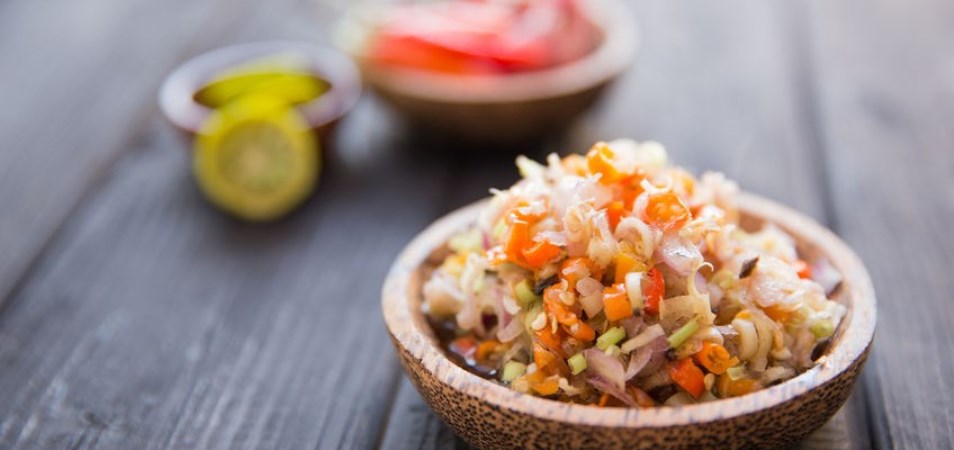
Embracing the Heat
Living in Bali has opened my eyes to the beautiful complexity of sambal. It’s not just a condiment; it’s a testament to the island’s rich culinary heritage. For those visiting or living on this enchanted island, embracing sambal is akin to embracing the Balinese culture – vibrant, warm, and invigorating.
So, the next time you’re in Bali and you come across a dish accompanied by a small plate of sambal, take a leap of faith. Dive into the intricate tapestry of flavors and let it set your palate on fire. After all, life in Bali is all about vibrant experiences, and sambal is nothing short of that.







